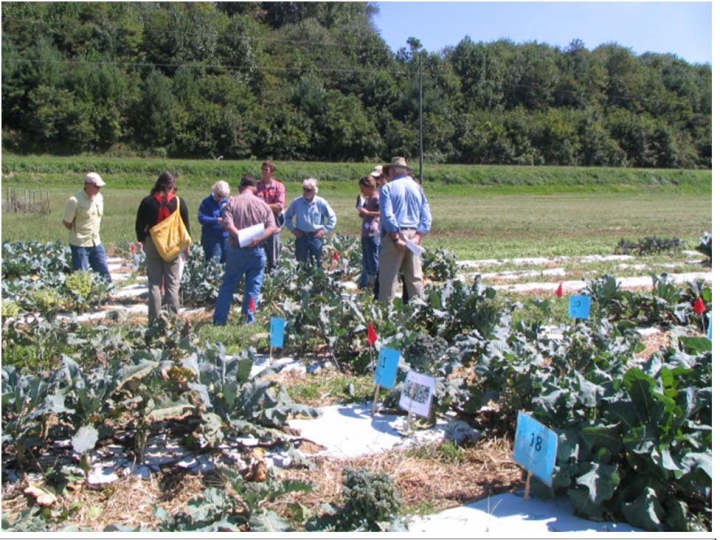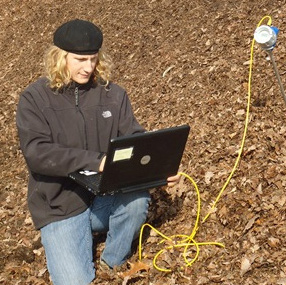Vegetables
Effectiveness of compost extracts as disease suppressants in fresh market crops in BC
Evaluation of summer cover crops as weed suppressive mulches
Controlling weeds in organic crops through the use of flame weeders
Several recent developments have resulted in the need for a new examination of flaming as a nonchemical method of weed control. First, there has been an increase in the number of soybean producers growing organic soybeans for the edible soybean market. These producers need a method of weed control that does not rely on chemicals. Second, new technologies in burner design and the use of water shields have increased the efficiency and effectiveness of flame weeders in destroying weeds while at the same time decreasing the harmful effects of heat on the crop plant.
Flame weeding in organic vegetable production
Flame weeding has been a controversial issue since it was introduced 58 years ago in North America. Today it is a bigger topic than ever. The idea behind flame weeding is to kill weeds with an intensive wave of heat, without disturbing the soil or harming the crop root system. Since all plants are composed of tiny cells filled largely with water, a thin blast of heat directed at the stalk will boil the water within the cell. The pressure generated by this expanding water will then explode the cell it self, rupturing a cross section of the stalk.
On-farm testing of organic weed control strategies in Indiana
Nashville, IN - In this on-farm study, organic vegetable producer Dale Rhoads tried out several organic herbicide materials and flaming in conjunction with a ‘stale’ seedbed to reduce the time and cost of hand-weeding leafy greens beds. The materials tested were Matran 5 (now reformulated and sold as Matran EC), two different vinegar solutions diluted to 13% and 10%, and Burnout II.
Participatory Screening of Broccoli Varieties for Summer Production in Organic Systems in Western North Carolina—Year 3: Phase II--On-farm Trials
 There is high demand for organic broccoli in the Southeast, as shown in a 2013 market survey by Carolina Farm Stewardship Association, which revealed that broccoli is one of the top organic produce items in short supply. Broccoli can be produced most anywhere in the spring and fall, but summer production is limited to cooler growing areas.
There is high demand for organic broccoli in the Southeast, as shown in a 2013 market survey by Carolina Farm Stewardship Association, which revealed that broccoli is one of the top organic produce items in short supply. Broccoli can be produced most anywhere in the spring and fall, but summer production is limited to cooler growing areas.
Deploying microbes as a seed treatment for protection against soil-borne plant pathogens
 Plant diseases, especially those caused by soil-borne seed infecting pathogens, pose a serious threat to the production of both greenhouse and field crops. Conventional farming operations often use fumigants and chemical seed treatments, which can be harmful to human health and the environment, for controlling seed and seedling pathogens.
Plant diseases, especially those caused by soil-borne seed infecting pathogens, pose a serious threat to the production of both greenhouse and field crops. Conventional farming operations often use fumigants and chemical seed treatments, which can be harmful to human health and the environment, for controlling seed and seedling pathogens.Snap Beans With Enhanced Nitrogen-Use Efficiency for Organic Production -Year 1
The snap bean is a vegetable in the Fabaceae family and does have the capacity to fix atmospheric nitrogen through a symbiotic relationship with Rhizobium spp. Historically, easy access to nitrate-based soil amendments at a relatively low cost has precluded the need to develop cultivars with improved nitrogen-use efficiency (NUE). Excessive fertilizer applications containing 40 to over 100 lbs. of N / acre have resulted in leaching and the contamination of ground and surface water.
Participatory Screening of Broccoli Varieties for Organic Systems in Western North Carolina
Identifying appropriate varieties for organic production in the mountains of Western North Carolina is considered a research priority by local growers.

